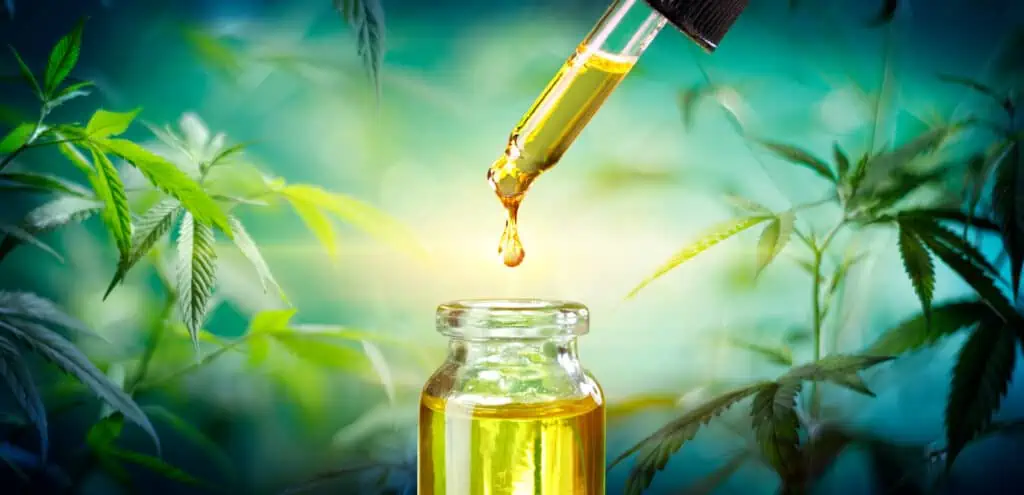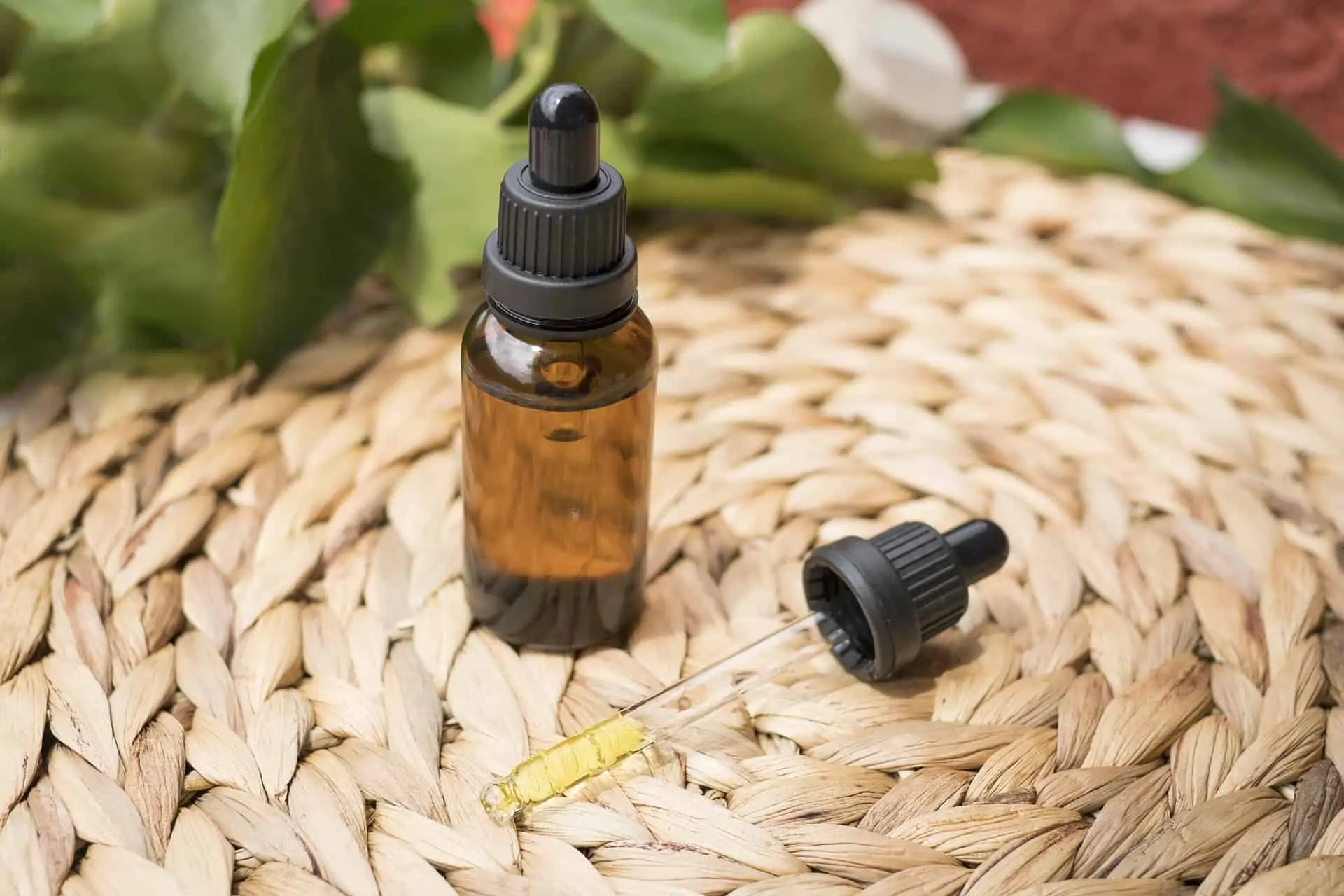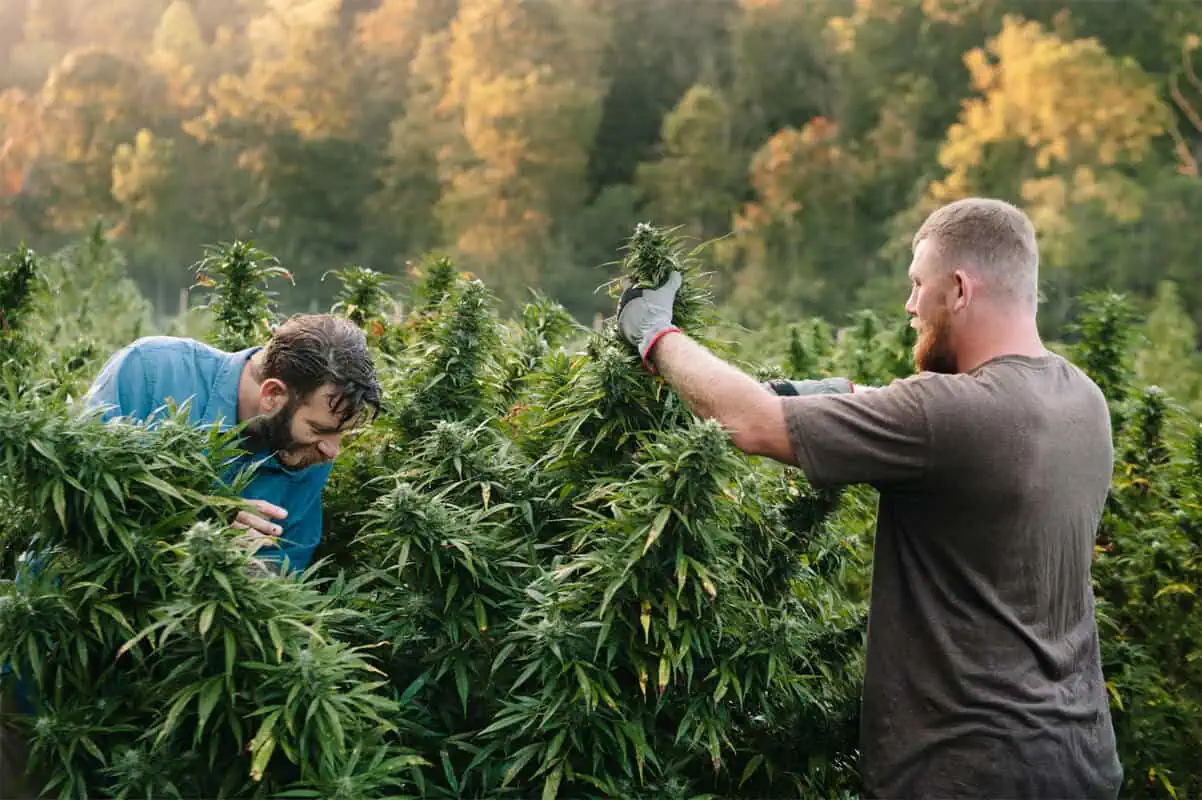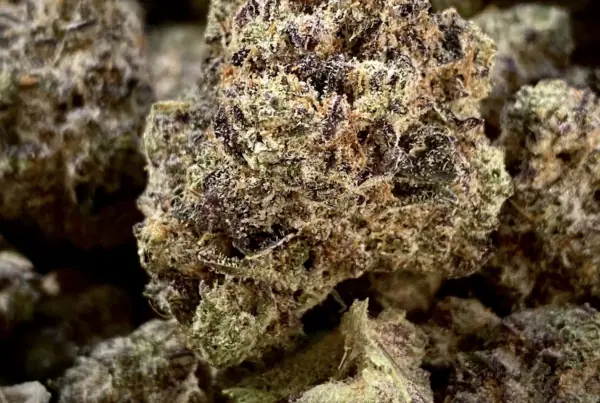TABLE OF CONTENTS
Cannabis tinctures are discreet and potent products. As an alternative to an alcohol-based tincture, a glycerin-based cannabis tincture allows patients to experience the therapeutic power of cannabis without ingesting any alcohol in the process.
What Is Vegetable Glycerin?
Vegetable glycerin, also known as vegetable glycerine or glycerol, is a colorless and odorless liquid usually made from coconut, palm, or soybean oils. Unlike the bitter and harsh taste of an alcohol tincture, vegetable glycerin has a mild and sweet taste with a syrupy consistency.
Vegetable glycerin is a popular ingredient in cosmetic and pharmaceutical products and has many other uses. Vegetable glycerin may provide numerous health benefits, including better skin, constipation relief, and better hydration. Vegetable glycerin cannabis tincture is a popular way to make THC tinctures.
Alcohol vs. Vegetable Glycerin Tincture
Some users may be unable to or don’t want to use high-proof alcohol as a cannabis trichome solvent. Vegetable glycerin has a milder and slightly sweet taste compared to alcohol-based tinctures' bitter and harsh taste.
Generally, alcohol is a better solvent and preservative compared to glycerin. Alcohol-based tinctures will have a longer shelf life, about 3 to 5 years, compared to glycerin tinctures which may be good for 1 to 2 years.

What You Need to Make a Glycerin Cannabis Tincture
Making THC tinctures using glycerin as a solvent is easy if you have the right ingredients and supplies. The tools needed to make glycerin tinctures are the same as when making alcohol-based tinctures.
Here’s everything you need to make a THC glycerin tincture at home:
- Dried plant material
- Grinder
- Mason jar
- Food-grade vegetable glycerin
- Crockpot (optional)
- Oven
- Strainer
- Cheesecloth or other straining material
- Large bowl
- Silicone spatula
- Latex gloves
- Oven mitts
- Dropper bottles
- Funnel
- Oven-proof dish
- Oven thermometer (optional)
How to Make a Glycerin-Based THC Tincture
With all your materials (listed above) in hand, you can start making your glycerin-based cannabis tincture with these step-by-step instructions:
Decarboxylation
- Preheat the oven to 212º F (100º C). Wait until the oven completely warms up.
- Cut the cleaned and sorted cannabis into pea-sized pieces. The idea is to expose the plant’s surface area to heat as much as possible without removing the bud’s trichomes.
- Place the prepared cannabis in an oven-safe dish, ideally with a transparent cover. Spread the material around evenly.
- Place an oven thermometer on top of the bud and cover the oven-proof baking dish.
- Place the baking dish in the preheated oven. Check on the cannabis every 10 minutes to check when the thermometer reaches 212º F.
- When you reach 212º F, heat the dish for 1 hour and 20 minutes. Ensure there are no temperature fluctuations throughout the process.
- After 1 hour and 20 minutes, turn the oven off and use the oven mitts to remove the baking dish from the oven.
- Allow the dish to cool for half an hour before removing the cover.
Infusion
- Place the prepared plant matter in a Mason jar.
- Cover the cannabis with food-grade liquid vegetable glycerin.
- Let the mixture sit for at least 60 days, shaking every day.
- To speed up the infusion process, you can place the jar in a water-filled crockpot to heat it gently, shaking it every hour. In this case, your infusion can be ready in a day or two.
Filtration
- Line a strainer with four layers of cheesecloth and place it on top of a large container or bowl.
- Wear latex or rubber gloves to protect your hands.
- Pour the cannabis mixture into the lined strainer. Allow 10 to 15 minutes for the liquid to strain through.
- Fold the plant material into the cheesecloth and gently squeeze the remaining liquid into the strainer. Set aside.
- Allow another 10 to 15 minutes for the liquid to strain through. Discard any liquid that doesn’t go through the filter.
- Transfer the oil to a 4-ounce Boston round bottle or Mason jar. The oil can be stored at room temperature, in the refrigerator, or the freezer.
How Long Does It Take to Make a THC Tincture?
Making a cannabis-infused tincture using glycerin at home does not take much time but requires a long soaking process.
- Preparing the dried material and decarboxylating it can take about 1 hour and 30 minutes.
- The infusion process takes at least 60 days with daily shaking or 1 to 2 days if using a crockpot to speed up the process.
- The filtration process takes about 40 minutes or so.
How to Consume Cannabis Tincture
Cannabis glycerin tinctures are discreet and versatile infused products that can be used in several different ways. Tinctures can be taken under the tongue or consumed with food or beverages. This makes it an ideal consumption method for many users.
One of the most popular delivery methods is through sublingual absorption (under the tongue), allowing compounds to quickly absorb through the blood vessels and reach the brain in a matter of minutes, providing 2 to 3 hours of effects.
Another way to enjoy cannabis tinctures is by adding them to your food or drink. When ingesting cannabis tinctures orally, they must go through the digestive system to metabolize, which can take 60 to 90 minutes for the effects to kick in but produce effects that can last up to 8 hours.
Benefits of THC Tinctures
Easy to Precisely Dose
Cannabis tinctures are easier to dose precisely. Dropper bottles have droppers that include milliliter measurements, showing you how much liquid you’re taking.
Good for First-Timers
Tinctures are great for first-time users who want to find the smallest dose needed to provide their desired effects without any side effects.
Discreet Delivery Method
Tinctures are odorless and easy to carry around in an opaque dropper bottle, making them ideal for discreet consumption.
Low Calorie
Compared to edibles, cannabis tinctures are low in calories. Edibles contain significantly higher amounts of calories.
Fast-Acting
Compared to edibles, cannabis tinctures have faster-acting effects. Sublingual absorption delivers effects within 10 to 15 minutes.
Long Shelf Life
If stored in a dry, cool, and dark place, tinctures can be stored for 1 to 2 years without losing much potency. The shelf life of tinctures is longer than most other infused products.
How To Make THC Tincture FAQ's
Are glycerin tinctures potent?
In terms of potency, glycerin tinctures can be potent depending on several factors:
-the extraction method used
-the quality of the cannabis
-the cannabis to glycerin ratio
-the amount of time (allowing the cannabis to soak in glycerin for an extended period can increase potency)
How do you make a tincture with glycerin?
Ingredients:
-7–14 grams of decarboxylated cannabis flower, depending on the strength that is required.
-Pure vegetable glycerin for food use
-A strainer with fine mesh or cheesecloth
-Mason jars or other lidded glass containers
-Extra herbs or flavorings are optional for personalization.
Steps:
Decarboxylation: Set the oven temperature to 240°F (115°C). The cannabis flower should be ground and then uniformly distributed on a baking sheet covered with parchment paper. To activate the THC and other cannabinoids, bake for thirty to forty minutes. Take it out of the oven and let it to cool.
Infusion: Fill a glass or mason jar with the decarboxylated cannabis. Cover the cannabis completely with a suitable amount of vegetable glycerin. To make sure all of the cannabis is dissolved, stir.
Storage: Place a tight-fitting lid on the jar. For four to eight weeks, keep it in a cold, dark area. Gently shake the jar every few days to stir the contents.
Straining: Pour the contents into another clean container using cheesecloth or a fine mesh strainer after the infusion period. Squeeze as much liquid out of the cheesecloth or strainer as you can.
Optional: To personalize the tincture, feel free to add other herbs or flavorings. All you have to do is add them to the strained tincture and shake the jar occasionally as it continues to infuse for a further week or two.
Bottling: Pour the strained tincture into airtight storage containers such as dropper bottles. Date and potency (if known) should be written on the containers.
How long does glycerin tincture take?
The entire process of making a cannabis glycerin tincture can take several weeks to a couple of months, depending on the desired potency and any additional infusions.
What is the best glycerin for tinctures?
It's crucial to get premium, food-grade glycerin when choosing glycerin for tinctures. The following elements should be taken into account while choosing the optimal glycerin for tinctures:
Food-Grade Certification: Verify that the glycerin you select has the food-grade designation on the label. Consuming food-grade glycerin is safe because it doesn't contain any contaminants that could degrade the quality of your tincture.
Vegetable Source: Vegetable oils like soy, coconut, or palm are among the many sources from which glycerin can be made. For individuals who care about the ecology and ethics, it is better to choose glycerin made from non-GMO, sustainably sourced vegetable oils.
Purity: Search for pure glycerin that is devoid of impurities, fillers, or additives. A high-quality glycerin should be transparent and colorless, with little to no smell.
Viscosity: There are several variations of glycerin, from thin liquids to thick syrups. A medium-viscosity glycerin is often recommended for tincture-making since it facilitates the simple mixing and absorption of herbal ingredients.
Solubility: Since glycerin is mostly a water-soluble solvent, it could not be as efficient as alcohol at extracting some chemicals from herbs. Nonetheless, selecting a glycerin that is well soluble can increase the tincture's overall quality and the extraction procedure.
What is a THC tincture?
A THC tincture is a liquid cannabis extract that contains THC. THC and other cannabinoids are usually extracted by soaking cannabis flower or concentrate in a solvent, like glycerin or alcohol.
“
There are over 300,000 jobs in the cannabis industry. CTU trained me for one of them!

Makes $24.50 @ THC +
How do THC tinctures work?
THC tinctures function by influencing the endocannabinoid system in the body, which controls a number of physiological functions including mood, appetite, pain perception, and memory. When THC connects to cannabinoid receptors in the body and brain, it releases feel-good, calming, and pain-relieving properties.
What are the benefits of THC tinctures?
THC tinctures are beneficial since they can alleviate the symptoms of several diseases such chronic pain, anxiety, insomnia, nausea, and spasms in the muscles. They can also give accurate dosage management and a discreet, practical way to consume cannabis.
How do you make THC tinctures at home?
To make THC tinctures at home, first decarboxylate the cannabis flower, then soak it in a solvent (such glycerin or alcohol) to extract the THC, and finally strain the liquid to get rid of the plant material. After then, the tincture is usually kept for a few weeks in a cold, dark place so that the cannabinoids can seep into the solvent.
What is the best method for extracting THC into a tincture?
Depending on available resources, preferred potency, and personal preference, there are a few different ways to extract THC into tinctures. Glycerin, oil (like coconut or olive oil), or alcohol (like ethanol or vodka) are common extraction techniques.
Enroll at CTU to Become a Cannabis Expert
Learn how to grow cannabis at home, indoors or outdoors, and make homemade edibles, extracts, vapes, glycerin or alcohol tinctures, and topicals with online cannabis education from Cannabis Training University. Become a cannabis expert today!

Fred Hernandez
Fred Hernandez is a highly accomplished and versatile writer, boasting an extensive background in the cannabis industry. With an in-depth understanding of various sectors including cultivators, processors, retailers, and brands, Fred's expertise spans across the entire cannabis landscape. As a prominent contributor to CTU, he consistently delivers insightful articles exploring the latest developments, news, and regulations shaping the cannabis industry. Whether it's delving into the intricacies of cannabis products, cannabis strain reviews, or providing comprehensive analyses of cannabis laws, or sharing expert insights on cannabis cultivation techniques, Fred's wealth of knowledge positions him as an invaluable writer and educator for all cannabis-related subjects.












 Jeff was involved in an accident where he endured a traumatic brain injury. He had a week-long stay in ICU where brain surgeons
Jeff was involved in an accident where he endured a traumatic brain injury. He had a week-long stay in ICU where brain surgeons  100% risk free money back guarantee within 48 hours after purchase if student has not completed any of the courses or exams.
100% risk free money back guarantee within 48 hours after purchase if student has not completed any of the courses or exams.